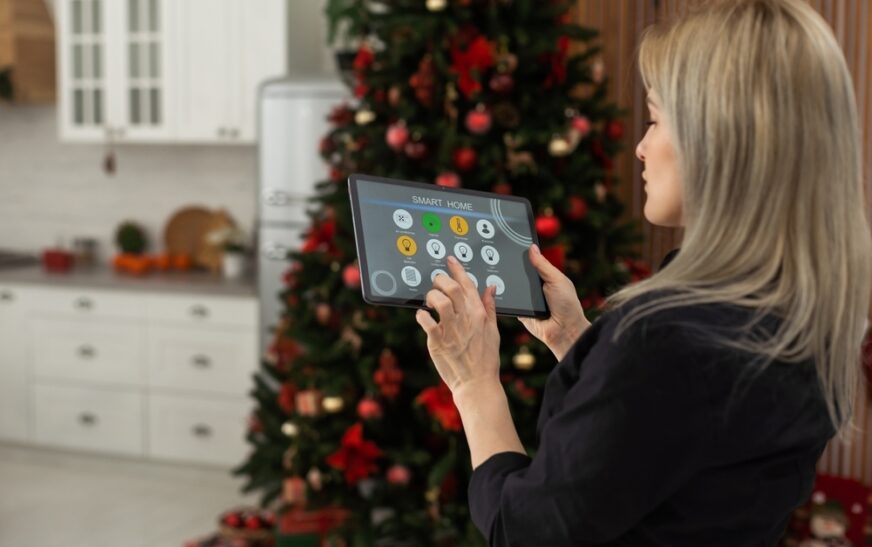Introduction
Welcome to the future of wearable technology! As we move closer to 2024, the landscape of smartwatches, fitness trackers, and health monitors is evolving rapidly. These devices are no longer just about counting steps or receiving notifications. They’re becoming integral parts of our health and wellness journeys, offering a plethora of features from heart rate monitoring to sleep tracking, and even stress management. In this blog, we’re diving into the next generation of these game-changing gadgets that promise to shape the future of wearable health tech. Get ready to explore the cutting-edge developments that are making these devices smarter, more intuitive, and essential for anyone looking to stay on top of their health and fitness in 2024.
Evolution of Smartwatches, Fitness Trackers, and Health Monitors
Past Trends in Wearable Health Technology
Let’s take a little stroll down memory lane, shall we? The wearable health tech landscape has seen some pretty remarkable changes over the years. Initially, fitness trackers were all the rage, primarily focusing on counting steps and monitoring sleep patterns. They were simple, yet effective tools for those looking to lead a healthier lifestyle. Then came the smartwatches, which took everything a step further by integrating notifications, calls, and even apps into their functionality, making them not just health companions but also digital assistants wrapped around your wrist. Health monitors also evolved, transitioning from basic heart rate monitors to sophisticated devices capable of tracking stress levels, oxygen saturation, and more. It was a time of rapid innovation, setting the stage for even more advanced developments.
Current State of Smartwatches, Fitness Trackers, and Health Monitors
Fast forward to today, and the situation looks quite different. Wearable technology has become more refined, offering a seamless blend of health monitoring, connectivity, and lifestyle integration. Current devices come equipped with features like ECG monitoring, GPS tracking, and water resistance, making them not just more useful for fitness enthusiasts but also for anyone interested in maintaining a general overview of their health. Some of the more advanced models can even detect falls, monitor menstrual health, and provide insights into sleep quality, illustrating the significant strides made in healthcare accessibility through wearable tech.
Anticipated Advances in 2024 Devices
The horizon for 2024 looks even brighter, with industry whispers and consumer anticipation hinting at groundbreaking advancements. Expect to see smartwatches and fitness trackers with even longer battery lives, perhaps even venturing into solar or kinetic charging methods to minimize downtime. Improved sensor accuracy is also on the cards, providing more reliable data for health monitoring. There’s also talk of heightened integration with medical databases, allowing for real-time health data analysis and personalized feedback. The possibility of non-invasive blood sugar monitoring is particularly exciting, offering a huge boon for individuals with diabetes. Moreover, the trend towards more sustainable manufacturing practices and materials is sure to make these gadgets not only smarter but also kinder to our planet.
Advanced Features in Next-Generation Wearables
Health Monitoring Capabilities
The future of wearables in health monitoring is incredibly promising. Groundbreaking features being explored include stress detection through skin conductivity measurements, hydration level tracking, and even the potential for early illness detection through advanced algorithms and biomarker analysis. These devices are evolving from simple fitness and health trackers to comprehensive health monitors capable of offering a 360-degree view of your physical well-being.
Integration with Everyday Life
Next-generation wearables are set to become even more integrated into our daily lives. With improvements in voice recognition software, users will be able to control their devices more intuitively, making hands-free operation a breeze. Smartwatches will also see enhanced synchronization with other smart devices, from smartphones to smart home systems, allowing for a seamless digital experience. Imagine controlling your thermostat, lights, or even your car with a simple command to your smartwatch!
Customization and Personalization Options
Personalization is another exciting frontier for wearable tech. The future will offer not only a wide range of styles, materials, and colors but also adaptive interfaces that change based on user preferences and habits. From watch faces that adjust according to the time of day to bands that change color to match your outfit, the possibilities for customization will be endless. Moreover, with advancements in AI, your device will be able to provide you with health and fitness advice tailored specifically to your personal goals and needs, making your wellness journey truly your own.
Impact on Health and Wellness Industry
The infusion of next-generation smartwatches, fitness trackers, and health monitors into the health and wellness industry has initiated a transformative shift, influencing how healthcare providers, wellness coaches, and individuals approach health and fitness. These advanced wearables are not just about counting steps or monitoring sleep patterns; they are becoming integral tools for remote patient monitoring, personalized wellness programs, and potentially reducing healthcare costs.
Remote Patient Monitoring
Remote patient monitoring (RPM) has burgeoned thanks to the latest advancements in wearable technology. Today, doctors and healthcare providers can observe a patient’s vital signs, such as heart rate, blood oxygen levels, and even blood sugar levels, in real time without the patient ever stepping foot into a medical facility. This innovation is particularly advantageous for managing chronic conditions, post-operative recovery, and elderly care, offering a seamless bridge between patients and healthcare providers. By minimizing the necessity for physical visits, RPM enhances efficiency and accessibility in healthcare delivery.
Wellness Programs and Behavioral Changes
Wearable technologies are reinventing wellness programs by providing personalized insights that encourage lifestyle adjustments and promote healthy behaviors. Equipped with sensors and software capable of analyzing physical activities, sleep quality, and even stress levels, these devices offer users comprehensive feedback on their health and wellness. Such detailed data empowers individuals to make informed decisions regarding diet, exercise, and stress management, fostering a proactive approach to health. Moreover, gamification elements, like challenges and rewards, have been integrated into these devices, making the journey towards wellness fun and engaging.
Potential Healthcare Cost Savings
The proactive nature of wearable health technologies can lead to significant healthcare cost savings. By facilitating early detection of potential health issues, encouraging healthy lifestyle changes, and reducing the need for in-person medical consultations through remote monitoring, these devices can play a pivotal role in decreasing healthcare expenditure. Not only do healthier individuals require fewer medical resources, but the data provided by these wearables can also help in tailoring more effective treatment plans, further optimizing healthcare delivery.
Future Trends and Innovations
The future of wearable health technology looks promising, with several trends and innovations on the horizon poised to enhance functionality, user experience, and health outcomes.
Artificial Intelligence Integration
Artificial intelligence (AI) is set to revolutionize how wearable devices function and interact with users. With AI, smartwatches and health monitors can provide more accurate health assessments, real-time personalized health insights, and predict potential health risks based on data trends. This smarter approach not only enhances the user experience but can also assist in preventive healthcare by alerting users to potential health issues before they become serious.
Enhanced Data Security and Privacy Measures
As wearable devices collect and store sensitive health data, the importance of robust data security and privacy measures cannot be overstated. Future iterations of these technologies will likely incorporate advanced encryption methods, secure data storage solutions, and stringent privacy protocols to protect user information. Ensuring data security will be critical in maintaining user trust and fostering wider adoption of wearable health technologies.
Industry Partnerships and Collaborations
To further advancements in wearable technology, we can expect an increase in partnerships and collaborations among tech companies, healthcare providers, and research institutions. These collaborations can accelerate innovation, expand the capabilities of wearable devices, and integrate them more seamlessly into healthcare systems. Such industry synergy is crucial for developing new features, improving accuracy, and ultimately creating wearables that can significantly impact global health and wellness.
The evolution of smartwatches, fitness trackers, and health monitors continues to shape the future of the health and wellness industry, promising more personalized, efficient, and accessible healthcare solutions for everyone.
Consumer Adoption and Market Outlook
As we look towards 2024, the landscape of wearable health technology, including smartwatches, fitness trackers, and health monitors, is evolving rapidly. This evolution is driven not just by technological advancements but also by changing consumer preferences and a dynamic market landscape.
Consumer Preferences and Expectations
Today’s consumers are more health-conscious than ever before, and they’re looking for devices that offer more than just step counting. They want comprehensive health monitoring that includes heart rate monitoring, sleep analysis, stress detection, and even blood oxygen levels. Additionally, there’s a growing demand for these devices to be seamlessly integrated into daily life, offering functionalities like smartphone notifications, payment capabilities, and more. As a result, manufacturers are focusing on creating devices that are not only multifunctional but also stylish and comfortable to wear 24/7.
Market Growth Projections
The future looks bright for the wearable health tech market. Industry analysts predict significant growth, with the global market expected to expand at a compound annual growth rate (CAGR) of over 20% from 2020 to 2025. This growth is attributed to increasing health awareness among consumers, advancements in technology, and the growing prevalence of chronic diseases which require continuous monitoring.
Competitive Landscape Analysis
The wearable health tech industry is becoming increasingly competitive, with a mix of established tech giants and innovative startups vying for a share of the market. Companies are differentiating themselves through technology, design, and partnerships. For example, some are focusing on niche markets, such as devices designed for elder care or specific health conditions, while others are banking on the allure of high fashion and brand partnerships to make their wearables stand out. Collaboration between tech companies and healthcare providers is also on the rise, aiming to create devices that not only track but also offer insights and recommendations to improve users’ health.
Conclusion: Embracing the Future of Wearable Health Technology
As we stand on the brink of 2024, it’s clear that the future of wearable health technology is not just looming; it’s already knocking on our doors. Smartwatches, fitness trackers, and health monitors are evolving at a breakneck pace, promising enhancements that could revolutionize how we interact with our health and wellness. The forthcoming gadgets are not mere extensions of our smartphones or simplistic step counters; they are sophisticated health guardians, designed to offer deeper insights into our well-being.
Beyond tracking steps and monitoring heart rates, these devices are gearing up to offer personalized health advice, predict potential health issues, and even suggest lifestyle modifications. The integration of artificial intelligence and machine learning means that the more we wear these devices, the smarter they become, providing tailored health monitoring like never before.
This evolution of wearable health technology is not just exciting; it’s empowering. It offers us unprecedented control over our health, encouraging a more proactive approach to wellness. In embracing these advancements, we are not just adopting new gadgets; we are welcoming a future where health is in our hands, quite literally. So, here’s to looking forward to diving into the world of next-generation smartwatches, fitness trackers, and health monitors in 2024. The journey towards a healthier, more informed future is just a wrist flick away.




















